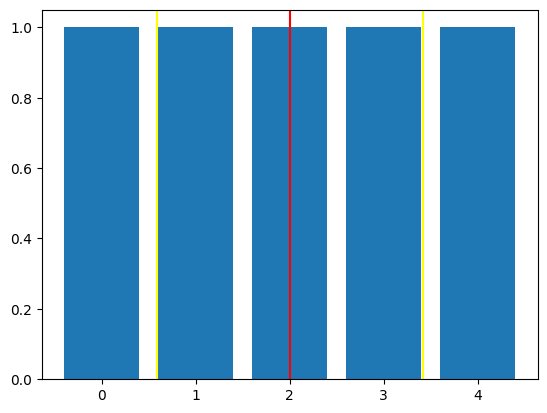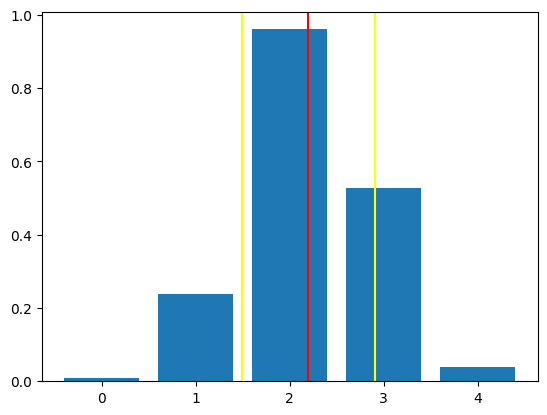5.1. Central Moment#
This section is a numerical introduction to the concept of central moment in the chromatographic context. Symbolic calculation will later be introduced using SymPy.
5.1.1. Simple Numerical Examples#
By “chromatographic context”, the following points are suggested.
We will consider the averaging of retention time (x axes in the following figures),
weighted by concentration (y axes).
Uniformly weighted Average#
import numpy as np
import matplotlib.pyplot as plt
N = 5
x = np.arange(N)
w = np.ones(N) # uniform weights
plt.bar(x, w)
m = np.mean(x)
s = np.std(x)
plt.axvline(m, color='red')
for p in m-s, m+s:
plt.axvline(p, color='yellow')

Averaging with Guassian Weights#
w = np.exp(-(x-2.2)**2) # non-uniform (gaussian) weights
u = 0
v = 0
for i in range(N):
u += w[i]*x[i]
v += w[i]
m = u/v
z = 0
v = 0
for i in range(N):
z += w[i]*(x[i] - m)**2
v += w[i]
v, z, z/v, np.sqrt(z/v)
s = np.sqrt(z/v)
plt.bar(x, w)
plt.axvline(m, color='red')
for p in m-s, m+s:
plt.axvline(p, color='yellow')

5.1.2. Do it faster in NumPy#
0th Raw Moment#
M0 = np.sum(w)
M0
1.772080571028074
1st Raw Moment or Mean#
M1 = np.sum(w*x)/M0
M1
2.199132225263884
2nd Central Moment and Standard Deviation#
M2 = np.sum(w*(x - M1)**2)/M0
M2, np.sqrt(M2)
(0.49785237938665794, 0.7055865498906976)
